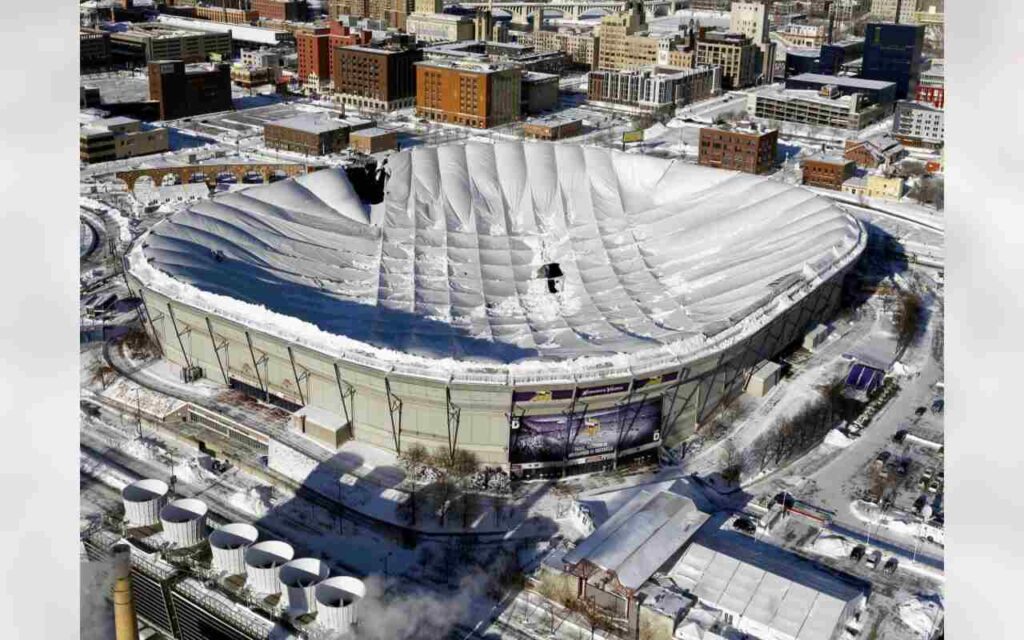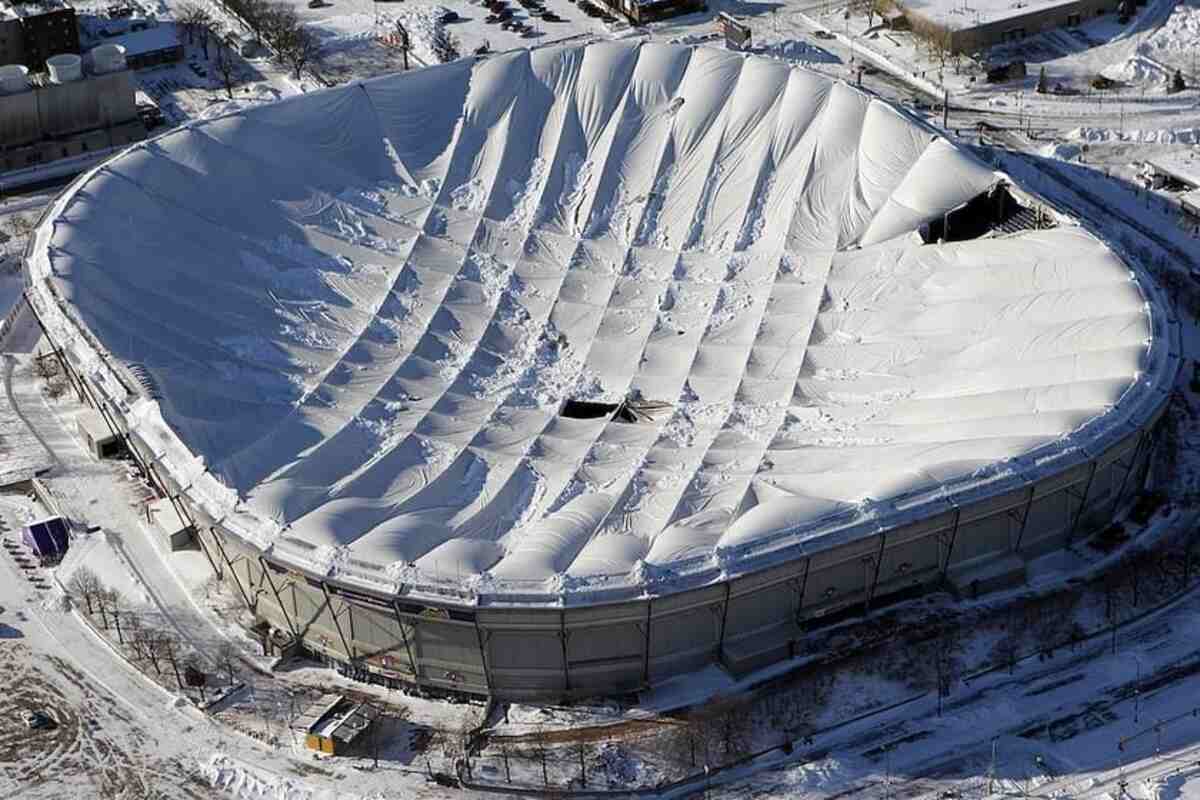The Minnesota Vikings embarked on a significant offseason overhaul, bidding farewell to veteran quarterback Kirk Cousins, who found a new home with the Atlanta Falcons, and receiver K.J. Osborn, who joined the New England Patriots. Now, the Vikings are reportedly eyeing J.J. McCarthy as a potential replacement for Cousins, signaling a fresh start.
The Vikings’ roster changes evoke familiar feelings for fans, harkening back to the Metrodome roof collapse that led to the team relocating to a new stadium.
Background on Vikings’ ‘technical difficulties’ shows 2010 dome collapse
The Minnesota Vikings’ home stadium, the Hubert H. Humphrey Metrodome, saw a disastrous event in December 2010 when its distinctive roof collapsed as a result of technical issues.
Hilarious…. The #Vikings “Technical Difficulties” background for all their socials is the 2010 Dome collapse.
— MLFootball (@_MLFootball) March 29, 2024
💀💀💀
(@PurpleForTheWin) pic.twitter.com/lx0o10rpXL
Since its opening in 1982, the Metrodome has been a staple for the Minnesota Vikings. Nearly 580,000 pounds of accumulated snow and ice were too much for the Teflon-coated fiberglass roof of the Metrodome to support.
Nevertheless, heavy snowfall on Dec. 11, 2010, caused the roof to buckle under the weight, leading to its dramatic collapse and a deluge of snow onto the football field. The catastrophic collapse occurred just before dawn on game day between the Vikings and New York Giants. Hence, it left a gaping hole in the roof and a surreal scene on the field below.
After the collapse, snow cascaded onto the artificial turf through a massive opening, while a section of the fiberglass roof dangled precariously above the 30-yard line. Nevertheless, the speakers hanging from the ceiling stayed undamaged, creating an unusual scene during the incident.
Minnesota Vikings’ immediate impact from 2010 dome collapse
The collapse of the Metrodome roof had significant immediate and long-term impacts on the Minnesota Vikings and their home games. When the roof caved in, it left the Vikings without a home stadium, causing unexpected revenue losses and logistical challenges. As a result, their scheduled game against the New York Giants had to be moved to Monday night in Detroit.

This incident proved the urgent need for a new, modern stadium that could ensure the team’s safety and stability. After seeing the damage the roof collapse had caused, the public rallied behind the Vikings’ cause and understood the need for a new facility.
This increased political support for the project, leading to the approval and construction of the U.S. Bank Stadium. The U.S. Bank Stadium was completed in 2016 at a cost of $1.061 billion, per Sportskeeda.
During the construction of the new stadium, the Vikings temporarily played their home games at TCF Bank Stadium, enduring freezing temperatures during some matchups.
At last, the completion of U.S. Bank Stadium marked a new era for the team, providing them with a state-of-the-art facility to call home.







